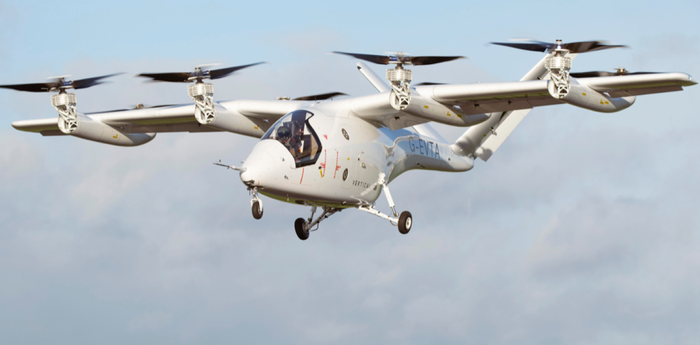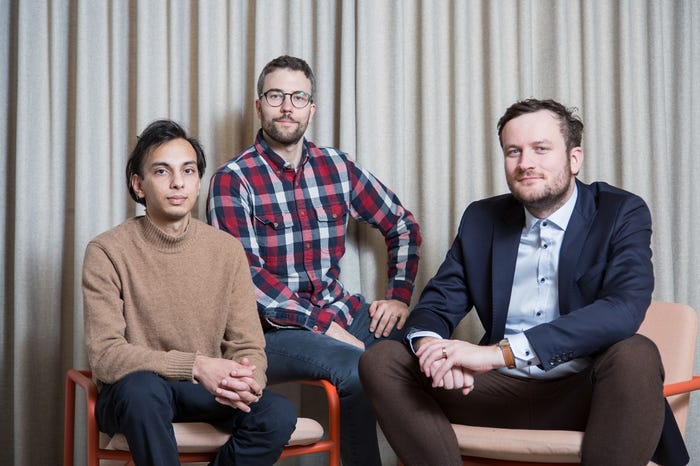7 smart city strategies from cities across the world7 smart city strategies from cities across the world
We highlight the innovative efforts of several of the leading international smart cities, drawing advice from their efforts.
October 5, 2017

Already have an account?
There still isn’t much of a consensus on how to define the term “smart city.” Most explanations of the term, however, describe using information technology, most notably the Internet of Things, to improve how cities are run and the quality of life for residents. The Smart Cities Council, a for-profit industry-led organization, states that a smart city harnesses information and communications technology to improve livability, workability and sustainability. In essence, a smart city uses connected sensors and information technology to improve the quality of life of residents.
The underlying idea of using technology to improve the quality of life may be simple, but it’s also an abstract and partly subjective concept. A vast range of cities across the world are attempting to deploy IoT technology to reimagine urban living and are adopting an array of strategies to do so. As a result, it isn’t clear when a city deserves the “smart” moniker. At present, “smart city” seems to be more of an aspirational term than a reality, although many cities are making quick progress in deploying cutting-edge information systems that are beginning to up the IQ of their municipalities. Here, we share the early experiences of several of these projects.
1. It starts with having a realistic plan
The lack of a solid definition for the term “smart city” should serve as a reminder of the importance of having a solid and realistic plan for transformation. If there is one lesson we can draw from so-called digital transformation efforts — whether they be in the city realm or another sector — it is that they are easier to talk about than they are to realize. Above all, real digital transformation and smart cities, however they are defined, require solid leadership and talent and an acceptance that intelligence is boundless rather than fixed.
Smart city strategies with utopian-seeming ideals face an uncertain future. Consider, for instance, the story behind Songdo International Business District in South Korea, a $40 billion “ubiquitous city” with technology interwoven in everything from streets to buildings. Songdo boasts 19.5 million square feet of Leadership in Energy and Environmental Design (LEED)-certified building space and has no need for trash bins or garbage trucks; a pneumatic system sucks trash through underground pipes, later sorting it for recycling or disposal. Sensors spread across the city gauge energy consumption, traffic and temperature. With roots stretching back to 2000, the city is one of the most technologically advanced on the planet, yet people aren’t exactly lining up to move there — although the city was slated to be completed by 2015. As the Los Angeles Times puts it: “This city on the Yellow Sea seems to have it all […] though is short on at least one thing: people.”
[Smart Cities Summit is the go-to event for government and technology executives mapping America’s smart cities. Visit the site to learn more about the agenda, speakers and networking opportunities.]
Songdo has much in common with Masdar City, a similarly ambitious project located in the Arabian Desert in the United Arab Emirates. With an estimated price tag of $18 billion to $22 billion, Masdar was designed to be a car-free, zero-carbon city with a daytime population of 90,000 and 50,000 full-time residents. Roughly 1,000 people live in the city now, which was scheduled to be completed by 2015. Given its present situation, planners have scrapped the goal of making the city carbon-neutral as well as its plan for rolling out a citywide network of driverless shuttles. While construction began in 2008, the completion date has been pushed back to 2030.
2. Smart cities require extensive experimentation
One of the best models for studying smart cities is Singapore, which at once embodies the potential of technocentric governance while raising questions about the degree that a smart city should surveil its citizens.
The island nation typically ranks at or near the top of most international rankings of smart cities. And unlike Songdo and Masdar City, Singapore already had an extensive technological infrastructure before Prime Minister Lee Hsien Loong launched its smart city initiative in earnest in 2014 by deploying roughly 1,000 sensors across the island with an unspecified number to follow. Singapore is also one of the first cities to explore the idea of having a virtual twin of itself, a $73 million project it simply calls “Virtual Singapore.” It also has one of the best transportation systems in the world and was the first nation to debut driverless taxis. In addition, Singapore has some of the fastest internet speeds in the world and is a pioneer in e-government initiatives.
The island nation is one of the best examples on the planet for a city as a laboratory for innovation. Unlike Songdo and Masdar City, Singapore was an existing city that already had a high quality of life — the best in Asia according to Mercer in 2014, which was the year it launched its smart city initiative. As it continues to roll out more sensors and technology, the city-state continues to rank well. Perhaps Singapore’s smart city strategy is more about maintaining its current technological edge than it is about gaining a new one. Mercer ranked Singapore as having the best infrastructure in the world in 2017, and Singapore continues to rank at the top of the list in many technological and quality-of-life rankings.
The city’s stated mission of tracking “Everyone, Everything, Everywhere, All the Time” or E3A, however, would likely raise eyebrows in many quarters if it were to become a shared ethos for smart cities.
While Singapore’s surveillance efforts have the tacit support of most citizens there, few smart city visions across the world reach so far into citizens’ lives. The city is working on a system that can identify, for instance, if someone is smoking in a prohibited area. Singapore is also testing the use of sensors to detect the sleeping patterns and even the snoring of a handful of older residents.
Singapore is also working on a system that uses artificial intelligence to be able to identify what they term “Moments of Life,” critical time points in citizens’ lives that traditionally require residents to schedule an appointment at a city department or fill out paperwork. Examples include everything from registering the birth of a newborn or applying for a passport. Singapore wants to change this model by pushing services to residents. “But there are always going to be some who are worried about AI and the amount of data that we are collecting,” acknowledged Mark Lim, a director-level member of Singapore’s GovTech organization in an interview with the Centre for Public Impact. “So we need to work towards building this trust and remind them the system is there to provide services for them, rather than be Big Brother.”
3. A smart city vision should energize the private sector
In many respects, Columbus, Ohio, is the antithesis of Singapore: It is an “every city” that is more famous for being the home of Ohio State University and an excellent zoo than for being a global tech hub. While the city has a quickly growing tech scene, the reason is an emerging smart city pioneer is more rooted in its mission to use technology to help its citizens and the firm support of local organizations in its vision.
The city could also potentially serve as a template for other cities throughout the United States that have smart city ambitions. When city officials entered to win the $50 million to win the 2016 U.S. Department of Transportation’s Smart City Challenge, part of the message seemed to be: If Columbus can become a smart city, so can other U.S. cities.
The city’s ability to find significant funding for its smart city initiative is perhaps the most impressive element. After it went on to win the Smart City Challenge, it was able to transform the $50 million in official winnings into $500 million by finding matching funding from the private sector. Ultimately, the city aspires to attract a total of $1 billion in private financing over a four-year period. So far, the public/private partnership includes $170 million from American Electric Power, which supports the city’s plan to deploy a network of electric vehicles. Other significant donors include Ohio State University (with $64 million) and the state of Ohio (with another $35 million).
The city of Columbus helps illustrate that municipalities shouldn’t go it alone when pursuing a smart city vision. While Columbus is unique in terms of how it won funding for its smart city vision, it reminds us that cities should work to achieve the buy-in of not just city employees, but of tech companies, universities, foundations, nonprofits and other government agencies.
4. Smart cities demand smart data
A city isn’t smart because it uses technology. A city is smart because it uses technology to make its citizens’ lives better. Building a smart city is a different type of endeavor than many technological projects because the demographic market is so broad — it includes, to some extent, everyone who lives there as well as visitors. “I think a lot of people in smart cities forget that you are building a smart city for the people — for the consumer — and not necessarily for the technologists,” said Michael Lee Sherwood, director of information technology for the city of Las Vegas.
Last year at the Smart Cities Week conference in Washington, D.C., that city’s deputy mayor for planning and economic development, Brian Kenner, expressed a similar sentiment, stating that he was “a little troubled” by the common tendency for smart city strategies to put technology ahead of people. “The reason why [a smart city] is important, from my perspective, is that it enables somebody to spend … their time more effectively and efficiently.”
Examples of this time-saving potential include everything from apps that help motorists find parking, to smart traffic control systems that use machine learning to predict and optimize traffic patterns.
Las Vegas, like many other cities with smart city ambitions, is transforming itself into a laboratory for smart city projects, but its focus on data and experimentation ensures that its experiments have a tangible benefit for its residents and visitors. Instead of declaring that it would make all of Las Vegas a smart city, officials there have stressed their plans with starting by transforming a downtown swath it calls “the Innovation District” and build from there. It carefully watches the results from those experiments and reviews the data from them before deciding to roll them out on a broad scale.
For instance, Sherwood has a vision for improving traffic throughout the city by deploying sensors at intersections in conjunction with machine learning technology. The sensors can count the number of vehicles and pedestrians and, over time, can intuit traffic patterns and make recommendations for how to optimize them. “We want to be able to study traffic patterns for, say, the last several Mondays and get a read for how we configure traffic for that day of the week,” Sherwood said. “We also are looking at monitoring the air. If we see a high percentage of carbon dioxide buildup, we are looking at changing the signal but not just the signal where you are, but the next two to three signals.” The city is launching a series of experiments to verify that the technology works as it plans.
The city also plans on using sensors to help pedestrians and is testing the use of computer vision technology to count the numbers of automobiles, cyclists and pedestrians traveling through intersections in its Innovation District neighborhood.
City officials plan on expanding the functionality of the system over time to steadily decrease collisions. “If we see a pedestrian walk out in the middle of the street, we will be able to send that information to vehicles down the street that may not be able to see that person. We can also let pedestrians know that they should get out of the street,” Sherwood said. “We are looking at making a mobile app, so if you have a smartphone with that app in your pocket, and you are jaywalking, we can send a signal to that. We can also collect that data and know how many people cross at that location and we can use this information to better design the street, so people use it properly.”
Las Vegas is also testing the use of autonomous vehicles and working to ensure that vehicles — whether piloted by humans or machines — don’t collide with pedestrians or other vehicles. “It is driving toward that zero-fatality concept where we can use technology to make a difference,” Sherwood said. “It is about how to use the data to create change. This will not only benefit Las Vegas but hopefully the world.”
5. Get creative when rethinking transportation
While city planners across the world work to rethink the age-old question of how to best get people from point A to B, there seems to be little agreement on what the best path forward might be in the long run. On one hand, there are the techno-optimists who aggressively push a future where autonomous vehicles rule the road, electric vehicles outnumber those fueled by gasoline, and the concepts of parking and traffic fatalities — and perhaps even traffic jams — begin to become irrelevant thanks to cutting-edge technology.
But the more sober perspective points out the radical lack of consensus on the subject. Battlegrounds are often drawn over everything from road versus rail and bicyclists, pedestrians versus drivers and whether electric vehicles should be subsidized or taxed.
But there may not be a one-size-fits-all solution for addressing traffic needs of the future. City officials and planners should keep an eye on the most innovative projects, while taking a broad view of the future of transportation.
While Dubai has made headlines for becoming the first city to test an autonomous passenger drone known as a Volocopter, the smart city vision is exemplary in terms of its overall strategy. The city plans to make a quarter of road trips driverless by 2030.
The city has a road map with 34 projects spanning driverless buses and taxis. Dubai’s Roads and Transport Authority has developed a transportation app known as RTA Dubai that was declared the Best Mobile Phone Service Award in the World at the World Governments Summit 2017. The city also plans to launch an international competition for autonomous vehicle technology designed to woo the support of tech firms and researchers while also helping to establish relevant standards.
6. Don’t downplay digital security
It would be unfair to single out a single city for its less-than-stellar cybersecurity. But the city of Dallas, Texas, became an early poster child of what can go wrong when a prankster set off all of the municipality’s 156 tornado sirens, causing some 4,000 people to dial 911. The sirens were, however, not linked to the internet. The hack targeted a weakness in the siren’s radio communications to make them sound.
Security is apparently a widespread concern for many smart city projects. A 2016 survey from Dimensional Research found that more than half, or 55%, of the 203 IT professionals it asked believed their cities were not sufficiently focused on digital security. Opinions were divided as to which technologies were most at risk. A total of 27% found that public Wi-Fi networks were most at risk while 18.6% found that smart grids were the most vulnerable targets. A total of 12.7% said that public lighting vulnerabilities were the biggest threat. Other related risks include critical infrastructure such as the power grid, water treatment facilities as well as transportation networks.
One of the chief challenges when securing ambitious smart city initiatives is devising a solid framework that can encompass an array of devices, some of which are novel and others may use decades-old technology. Such efforts require cybersecurity experts but it can be difficult to find professionals with expertise in securing operational technology (OT). “If you need five [cybersecurity professionals], you likely end up picking five IT people and training them on OT,” said Ken Modeste, principal engineer, security and global communications at Underwriters Laboratories.
Because of the quickly moving landscape and the potential threats involved that include critical infrastructure, training and education are of utmost importance for smart city strategies. Thankfully, there are a growing number of resources available that detail the biggest risks to smart city projects and provide advice on how to address them. Examples include Securing Smart Cities, an international not-for-profit global initiative that has published a series of documents on the subject, and Industrial Control Systems Cyber Emergency Response Team (ICS-CERT), a division of the U.S. Department of Homeland Security that also focuses on threats to critical infrastructure.
7. Smart city initiatives should complement low-tech initiatives
Cities aspiring to become “smart” run the risk of becoming so focused on technology that they lose sight of promising initiatives that don’t require connected sensors, kiosks or any other type of widget.
Barcelona, one of the leading smart cities in Europe, provides an example of a city using a mix of high- and low-tech initiatives. Look at how the city is working to improve its air quality. Struggling to consistently meet EU air quality standards, Barcelona came up with a comprehensive plan for 2013 to 2018. It keeps tabs on pollution levels by using a system known as XVPCA, which monitors and forecasts air pollution levels. Barcelona is working on improving its air quality monitoring. It is deploying air quality sensors throughout the city. Researchers are also working to improve the precision of an air quality prediction system known as Caliope developed at Barcelona’s Supercomputing Center.
After researchers concluded that roughly two-thirds of the nitrogen oxides in the surrounding Catalonia region came from motor vehicles, the city decided to launch a low-tech initiative to reduce pollution levels; It would use “superblocks” (“superilles” in Catalan), which are square grids of up to nine city blocks that are mostly shut off to vehicular traffic. The plan to convert almost 60% of city streets into superblocks has sparked protests from some drivers, but it has proven popular to many people living in the first neighborhoods affected by the plan. Air quality sensors strewn across the city have shown significant improvements in air quality thus far.
Not only are the superblocks more pedestrian- and cyclist-friendly, they leave space for outdoor markets and other outdoor activities while also reducing noise levels and pollution levels. By the end of next year, up to 500 superilles could blanket Barcelona. The city is also planning to double the number of trees throughout the city and increase space for parks.
Barcelona is also rolling out a slew of other initiatives intended to improve air quality, including helping to educate the public about the causes of air pollution, promoting biking and car sharing, changing traffic lights to favor public transit, encouraging taxis that use clean fuels, and reducing emissions from construction activities.
Already, the data the city is collecting is enabling it to take other low-tech steps to improve air quality. After concluding that about a third of PM10 traffic emissions were from particulate matter deposited on roads, the city rolled out plans to clean the roads, preventing the particles from again becoming suspended in the air.
The plan seems to be working: At present, Barcelona’s air quality rates as good, and has low levels of nitrous oxide, particulate matter and ozone.
Cities like Barcelona help remind us that, for a smart city to make good on its promises to improve quality of life for residents, it needs data and innovative thinking.
About the Author
You May Also Like






